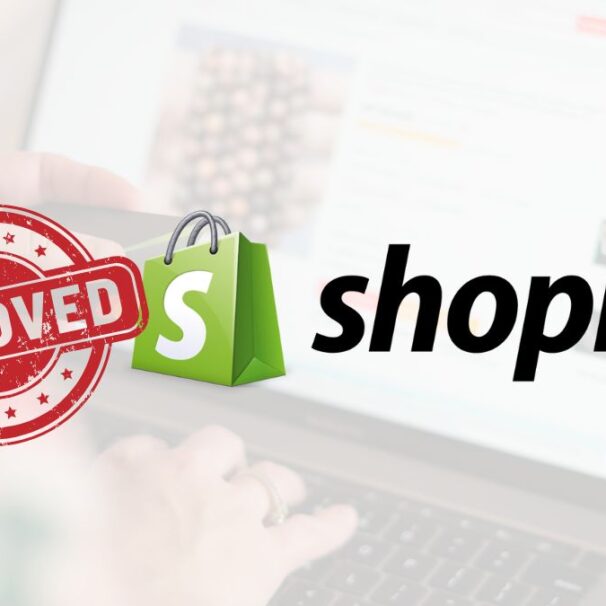Ecommerce is growing at an unprecedented rate. In order to start and sustain a successful eCommerce business, you will need to have a comprehensive and well-thought-out business plan.
This guide will walk you through the process of creating a perfect business plan for your eCommerce venture, including what should be included and how to format it.
What is a business plan and why does your eCommerce business need one?
A business plan is a road map that helps entrepreneurs navigate their new business venture. It allows them to track their progress and make necessary changes along the way.
In fact, a well-crafted business plan can also help secure funding from investors and lenders.
Why do you need a business plan when starting an eCommerce business? Because it will help you establish your company’s purpose, set goals, and make decisions about how to allocate your resources.
Without a plan, it’s easy to get off track and miss opportunities.
Here are some of the reasons to draft a business plan:
a). Helps you define and understand your business goals
When you are starting a business, it is crucial to have a clear idea of what you want to achieve. A business plan helps you define your goals and create a roadmap for achieving them. It can also be a valuable tool for communicating your vision to potential investors and partners.
You see, sitting down to create a business plan forces you to think critically about every aspect of your business, from your products and services to your target market and marketing strategy. This process can help you identify potential problems and find solutions before they become too costly or difficult to fix.
b). Helps you to research and understand your target market
As you will discover in a minute, a key part of any business plan is researching and understanding your target market.
This process can help you identify potential customers and understand what they are looking for in a product or service.
By taking the time to research your target market, you can create a more targeted and effective business plan that will help you achieve your goals.
c). Know your competition
Another benefit of having a business plan is that you get a chance to understand who you are going up against.
This can be done through market research, which can help you understand what your competitors are doing right and wrong.
Additionally, you can learn about their target markets, pricing strategies, and marketing techniques. This knowledge will allow you to make your business unique and differentiated from the competition.
As a result, you will be able to better serve your target market and grow your business.
d). Create a sales and marketing strategy
Without a sales and marketing strategy for your eCommerce business, you’re doomed to fail.
Luckily, a business plan allows you to create a sales and marketing strategy that will help you reach your target market and make sales.
That said, your eCommerce business plan doesn’t have to be complicated or fancy. But it should be thorough and cover all the basics. Here’s what you need to include:
The Executive Summary: Write a short description of your eCommerce website
An executive summary is a brief overview of a business plan that highlights the key points of the plan in a concise, easy-to-read format. It should be no more than 1-2 pages long and should include a brief description of your eCommerce business, your target market, your unique selling proposition, your marketing strategy, your financial projections, and your team.
Here are some tips on how to write an effective executive summary for your eCommerce business plan:
- Keep it short and sweet. As mentioned before, an executive summary should be no more than 1-2 pages long. Get to the point and provide only the most essential information.
- Write it last. After you’ve gone through the process of creating a comprehensive business plan, writing the executive summary will be much easier. You’ll already have all of the key points outlined, so you can simply condense them into a few paragraphs.
- Focus on your target market. In your executive summary, be sure to include information on who your target market is and why they would want to buy from you. What needs does your product or service meet?
- Highlight your unique selling proposition. What makes you different from other eCommerce businesses in your industry? Why should customers choose you over the competition? Be sure to answer these questions in your executive summary.
The Products and Services: List and describe the products and services you will offer
The products and services section of a business plan is one of the most important sections.
This section should include a description of the products or services you offer, as well as how your product or service is different from other similar products or services.
Here are some tips to help you write a strong products and services section:
- Start by describing what your product or service is and how it meets the needs of your customers.
- Be sure to include information on why your product or service is better than other similar offerings on the market.
- Include details on how your product or service will be delivered to customers, such as through shipping, online ordering, etc.
- Be sure to include pricing information in this section so that potential investors can get an idea of your business model.
Finally, conclude this section with a brief statement on your plans for future product or service development.
The Market Analysis: Research and describe your target market
This is where you will describe the industry in which your business will operate, your target audience, as well as the market for your products or services. Here are some tips to help you write a better market analysis section:
- Do your research – Before you start writing, make sure you have a good understanding of the industry and the specific market you are targeting. Use secondary sources like trade associations and government data to get an overview of the industry, and then use primary research methods like surveys and interviews to get more specific information about your target market.
- Know your competition – A thorough understanding of your competition is essential for any business, but it’s especially important when writing your market analysis section. Be sure to include information on the size and scope of your competitors, as well as their strengths and weaknesses.
- Be realistic – When writing your market analysis, it’s important, to be honest about both the potential opportunity and the risks involved. Don’t try to exaggerate the potential for your business or downplay the competition; instead, provide a balanced view that investors can use to make informed decisions.
- Keep it concise – The market analysis section of your business plan should be relatively short (2-3 pages is ideal). Remember that you can always provide more details in appendices if necessary, but don’t let this section get too long or bogged down in details.
The Sales and Marketing Plan: Outline your sales and marketing strategy
If you are looking to write a great business plan for starting an eCommerce business, you need to make sure to include a strong sales and marketing section.
This section is important because it will outline your strategies for selling your product or service and getting new customers. Here are some tips to help you write a great sales and marketing section:
- Start by outlining your overall sales strategy. What methods will you use to sell your product or service? How will you reach new customers?
- Next, provide specifics on your marketing efforts. What kind of advertising and promotion will you do? How will you make sure that your target market knows about your business?
- A SWOT analysis is also a helpful tool to include in your sales and marketing section. This will help you identify your business’s strengths, weaknesses, opportunities, and threats.
- And the KPIs you’ll be using to measure your success.
Finally, don’t forget to include a budget for your sales and marketing activities. How much money are you willing to invest in these efforts?
The Financial Plan: Detail your financial projections and funding needs
In this section of the business plan, you will provide details about your business’ financial situation. This section should include information such as:
- Your company’s start-up costs (if any) and how these costs will be covered.
- A pro forma profit and loss statement for your first three years of operation.
- Breakeven analysis – when do you expect to become profitable? How much revenue will you need to generate in order to cover all of your expenses? What are some key assumptions that this analysis is based on?
- Your company’s long-term financial goals and how you plan to achieve them.
If you are seeking outside financing for your eCommerce business, this section will be especially important as it will give potential investors or lenders an idea of your business’ financial health and future prospects.
Be sure to include all relevant information in this section so that readers have a clear understanding of your business’ finances.
Final thoughts
In conclusion, these tips will help you write a perfect business plan for your eCommerce website startup.
Follow these steps and do your research to create a comprehensive, well-thought-out business plan. This document will serve as a roadmap for your e-commerce business and will help you secure funding and partnerships.
With a solid plan in place, you can launch your online store with confidence and start selling products or services online.
eCommerce business plan template (free)
To help you out, here is an online store business plan template you can copy:
Executive summary
Company name:
Founders/leadership team:
Products/services:
Target market:
Marketing strategies:
Goals:
Company introduction
What does your business do?
What problem does it solve, and how?
Business model:
Mission statement:
Company values:
Market research
Ideal customer:
Market size:
Competitive analysis:
What makes your business different from the competition? What are your advantages and opportunities?
Company structure
Legal structure:
Leadership team:
Organizational chart:
Products and services
Product/service 1:
Product/service 2:
Product/service 3:
Pricing, positioning and profit margins:
Manufacturing/supply chain:
Intellectual property claims:
Marketing strategy
SWOT analysis:
- Strengths:
- Weaknesses:
- Opportunities:
- Threats:
Marketing channels:
Marketing strategies:
Marketing goals and KPIs:
Finances
Revenue (projected or actual):
Profit or loss:
Expenses:
Debt:
Investments:
Budget vs. actuals:
Related articles
-
How to Set Up a Dropshipping Fashion Store Online

Ever dreamed of running your fashion brand? Selling trendy clothesContinue readingHow to Set Up a Dropshipping Fashion Store Online
-
How to Manage Inventory for an Online Fashion Business

Think about it: You enter your favorite clothing store,Continue readingHow to Manage Inventory for an Online Fashion Business
-
How to Remove “Powered by Shopify” from Your Store

Want to give your Shopify store a more unique andContinue readingHow to Remove “Powered by Shopify” from Your Store
-
Odoo vs. Shopify: Which One for Your Business?

As an e-commerce, choosing the right platform can be aContinue readingOdoo vs. Shopify: Which One for Your Business?
-
How to Be a Shopify Developer: The Ultimate Guide to Starting and Scaling Your Career

Are you wondering how to be a Shopify developer inContinue readingHow to Be a Shopify Developer: The Ultimate Guide to Starting and Scaling Your Career
-
How to Cancel Your Shopify Subscription (Updated)

Thinking about canceling your Shopify subscription? Whether you’re moving toContinue readingHow to Cancel Your Shopify Subscription (Updated)
-
Ecwid vs. Shopify: Which One Is Best?

For entrepreneurs and businesses venturing into the online marketplace, selectingContinue readingEcwid vs. Shopify: Which One Is Best?
-
Etsy vs Shopify: Which One Is Best For You?

Have you ever dreamed of turning your passion into profit?Continue readingEtsy vs Shopify: Which One Is Best For You?
-
How to start an online eco-friendly baby store

How to start an online eco-friendly baby store … Continue readingHow to start an online eco-friendly baby store
-
Shipping and Returns: Best Practices for Baby E-commerce

When it comes to e-commerce one of the greatest strengthsContinue readingShipping and Returns: Best Practices for Baby E-commerce
-
How to Buy Branded Clothes Online: Tips for Finding Deals & Avoiding Fakes

Online shopping is become an essential part of our dailyContinue readingHow to Buy Branded Clothes Online: Tips for Finding Deals & Avoiding Fakes

